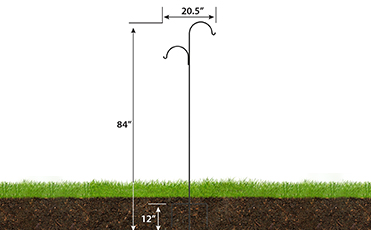Durable Square Steel Posts for Reliable Fencing and Structural Support Solutions in Various Applications
Aug . 07, 2024 13:00
The Utility and Versatility of Square Steel Posts
In modern construction and engineering, the materials we choose can significantly impact the durability, functionality, and aesthetics of a structure. Among these materials, square steel posts have emerged as a popular choice in various applications, ranging from commercial buildings to residential fences. This article delves into the characteristics, benefits, and applications of square steel posts, highlighting their integral role in contemporary construction.
Understanding Square Steel Posts
Square steel posts are structural components made from steel, designed in a square cross-section. Their design provides several advantages over other shapes, including uniform strength distribution and ease of integration with various construction elements. Typically available in various sizes and thicknesses, these posts can be manufactured to meet specific load-bearing requirements, making them ideal for a variety of applications.
Strength and Durability
One of the most significant advantages of square steel posts is their strength. Steel is renowned for its high tensile strength, which allows it to bear heavy loads without bending or breaking. This characteristic makes square steel posts particularly useful in supporting structures like decks, porches, and even larger frameworks in commercial buildings. Moreover, steel is resistant to various environmental factors such as moisture, pests, and extreme temperatures, which enhances the longevity of structures that incorporate these posts.
Versatility in Applications
Square steel posts can be utilized in numerous applications across different sectors. In the residential market, they are commonly employed as fence posts, providing a sturdy and reliable option for property boundaries. Their sleek, modern appearance also adds a contemporary aesthetic to gardens and outdoor spaces.
square steel posts

In the commercial sector, square steel posts are integral in creating robust frameworks for buildings, scaffolding, and canopies. Additionally, they are often used in the construction of bridges and highways, where strength and durability are paramount. Their versatility does not end here; they are also utilized in industrial settings for shelving systems, machinery bases, and equipment support, reflecting their adaptability to various environments.
Cost-Effectiveness and Low Maintenance
While the initial investment in square steel posts may be higher than that of wooden or plastic alternatives, their long-term cost-effectiveness is notable. Steel’s durability means that it requires less frequent replacement or repair, leading to lower maintenance costs over time. Additionally, many steel posts are coated with anti-corrosive finishes, which protect against rust and wear, further extending their lifespan.
Environmental Considerations
As sustainability becomes a significant concern in construction, square steel posts stand out due to their recyclability. When a structure reaches the end of its life cycle, steel can be recycled and repurposed without loss of quality, making it an environmentally friendly option. Furthermore, the energy consumed in the production of steel has been decreasing due to advancements in technology, making it a more sustainable choice for building materials.
Conclusion
Square steel posts represent a fusion of strength, versatility, and sustainability, making them an indispensable component in modern construction. Their ability to adapt to various applications—from residential fencing to commercial building frameworks—underlines their importance in both durability and design. As the construction industry continues to evolve, the reliance on robust materials like square steel posts will only increase, paving the way for stronger, longer-lasting structures that meet the demands of contemporary society. Whether for practical or aesthetic purposes, square steel posts are indeed a cornerstone of modern engineering and construction.




















